Hidden Messages in 10 Famous Artworks You’ve Never Seen Before
Ever stared at a famous painting and felt like there is more than meets the eye? Well, your intuition might be right. Artists have often slipped in hidden messages, cryptic symbols, and intriguing secrets from ancient masterpieces to modern classics. In this exploration, we’re peeling back the layers of iconic artworks to reveal what you’ve probably missed. Ready to see the unseen?
Whisper of Rebellion in “The Last Supper”
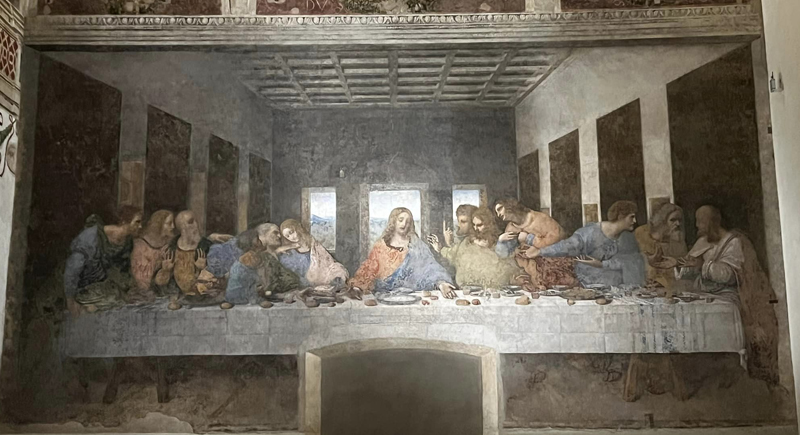
Credit: Facebook
Leonardo da Vinci’s “The Last Supper” is a treasure trove of mysteries, but did you know it contains a subtle nod to rebellion? Observers argue that the arrangement of hands and loaves on the table mirrors musical notes. When translated to a musical sheet, these notes play a melody. Some believe this could be Leonardo’s way of injecting his personal defiance against the norms of his era.
Hidden Hebrew in “The Sistine Madonna”
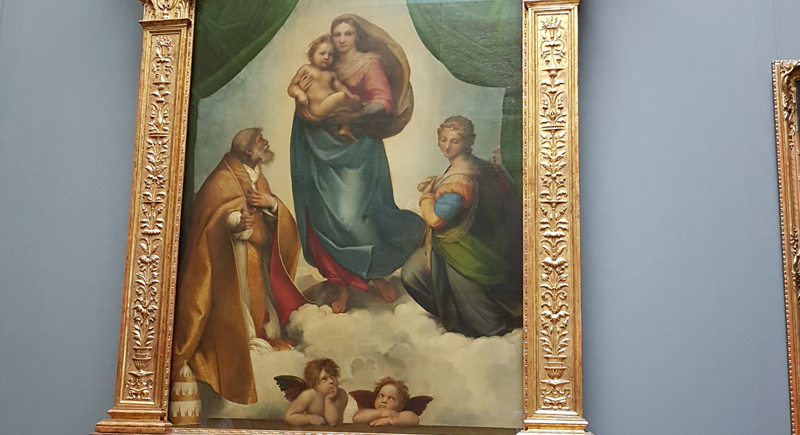
Credit: Wikimedia Commons
Raphael’s “The Sistine Madonna” features two cherubs at the bottom, known to almost everyone for their angelic expressions. However, the curtain above the Madonna is subtly arranged in Hebrew letters, spelling out the holy name of God. This inclusion is a nod to the divine, weaving religious reverence quietly but profoundly into the artwork.
Hidden Lovers in “The Ambassadors”
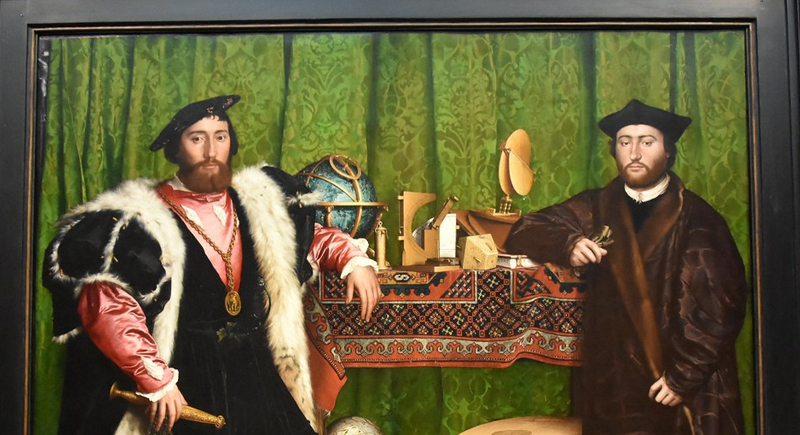
Credit: flickr
Hans Holbein’s “The Ambassadors” is famous for its anamorphic skull, but did you notice the hidden crucifix in the top left corner, almost blending with the curtains? This subtle inclusion hints at the tension between the emerging Protestant Reformation and enduring Catholic traditions, reflecting the religious turmoil of the 1530s.
Van Gogh’s Starry Night Cipher
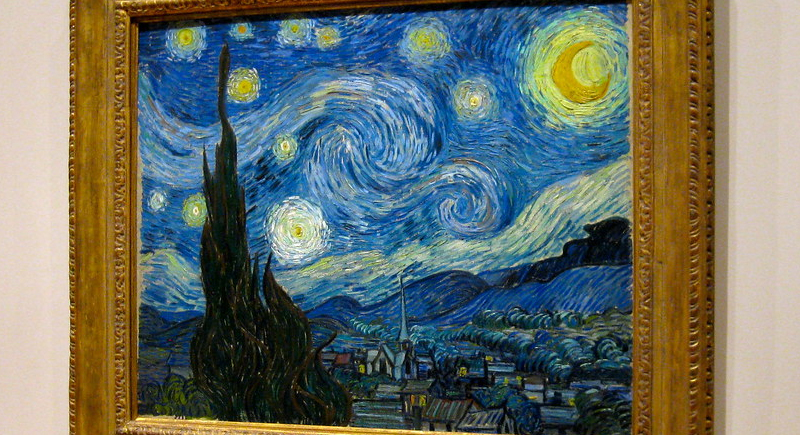
Credit: flickr
Vincent van Gogh’s “Starry Night” might just be speaking the language of the cosmos. The swirling skies above the quiet village are not just a reflection of Van Gogh’s turbulent thoughts but are also thought to align with celestial constellations. Some astronomers even suggest that the patterns correlate with specific stars and planets visible in the night sky of 1889.
The Secret Anatomical Lesson in “Creation of Adam”
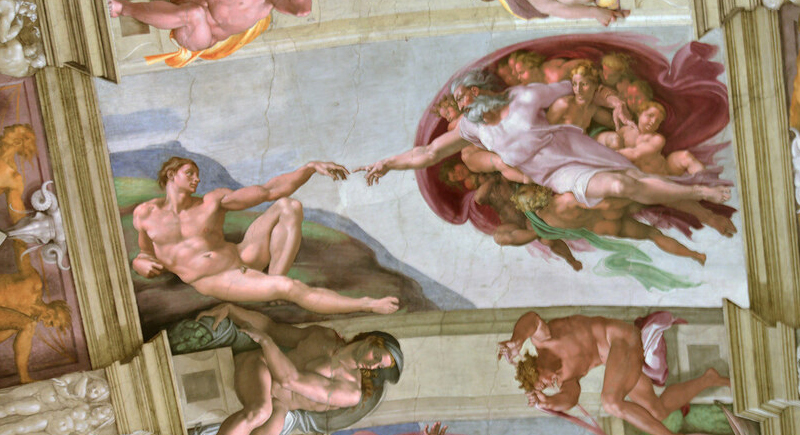
Credit: flickr
Michelangelo’s “Creation of Adam” isn’t just a biblical scene; it’s a complex anatomical encryption. The background, shaped like a human brain, suggests Michelangelo was bridging theology and human anatomy. This hidden gem underscores the Renaissance spirit of blending art with science, hinting at God imparting not only life but also intellectual spark.
Dürer’s Celestial Communication
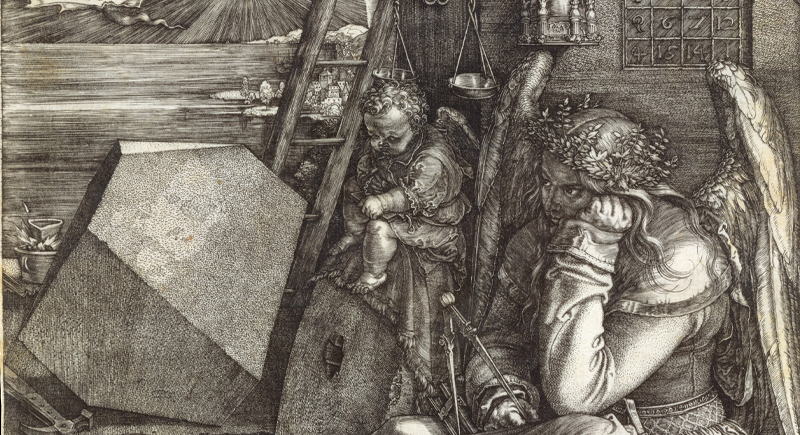
Credit: Wikimedia Commons
Albrecht Dürer’s “Melencolia I” has puzzled art critics for centuries with its detailed depiction of a melancholic angel surrounded by random objects. Among these, a magic square stands out, with numbers that add up to 34 in any direction. This 1514 engraving is believed to contain hidden astrological and mathematical messages, showcasing Dürer’s fascination with the heavens and numerology.
Frida’s Pain Layered in “The Two Fridas”
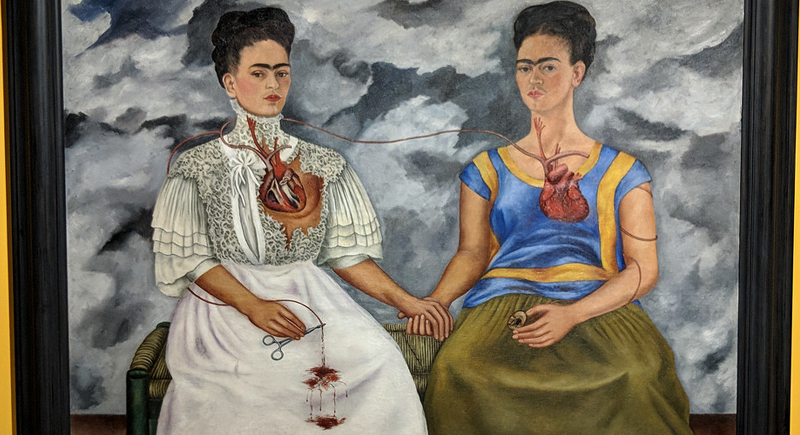
Credit: flickr
Frida Kahlo’s “The Two Fridas” is a vivid portrait of her dual heritage and personal struggles. The two versions of Frida are connected by both hands and a vein that is cut by surgical pincers. Hidden within this heart-wrenching scene is Kahlo’s profound pain from her divorce and her complex identity struggles, painted into a beautiful yet haunting duality.
Botticelli’s Secret Flora in “Primavera”
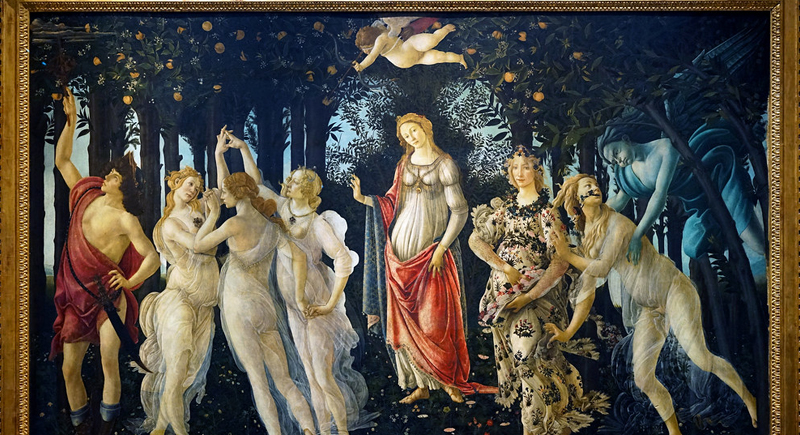
Credit: flickr
At first glance, “Primavera” by Sandro Botticelli is a celebration of spring, but hidden within the lush flora are over 500 different plant species, each meticulously chosen for its symbolic meaning. Renaissance viewers would recognize these as subtle nods to love, fertility, and the myths of the Medici family, Botticelli’s patrons.
Turner’s Industrial Smog
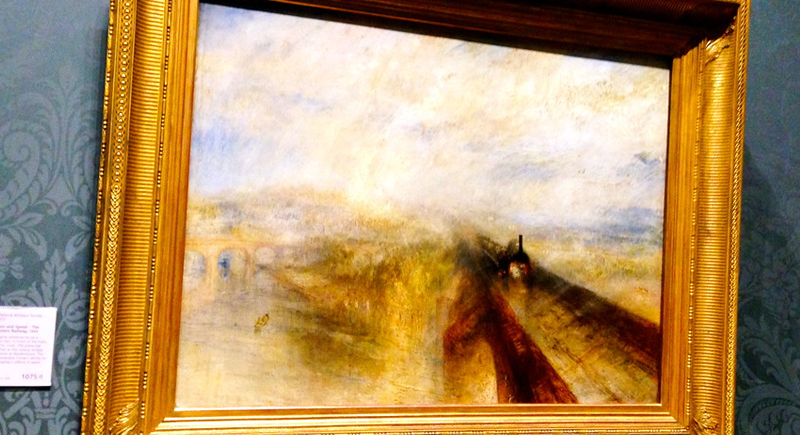
Credit: flickr
J.M.W. Turner’s “Rain, Steam, and Speed—The Great Western Railway” isn’t just a landscape with a train. The painting is laden with the murky hues of the Industrial Revolution, symbolizing progress and its environmental toll. Turner’s use of gloomy colors and blurred lines communicates the chaotic impact of industrialization on the natural world.
Grant Wood’s Rebellion in “American Gothic”
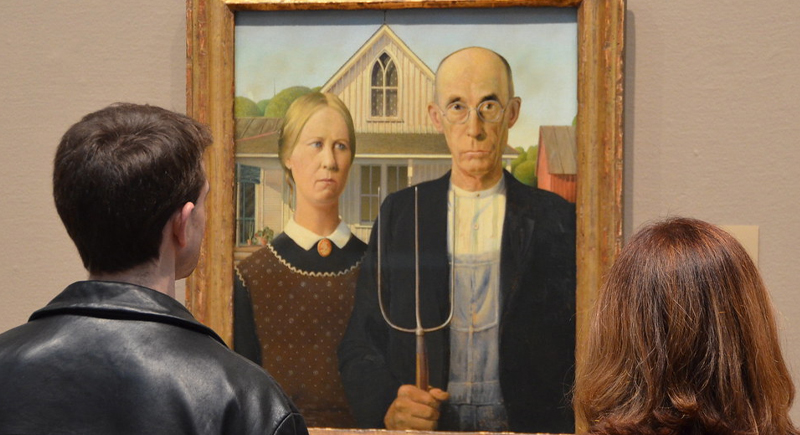
Credit: flickr
The iconic “American Gothic” by Grant Wood is more than just a farmer with his daughter. It’s believed to be a satirical commentary on the rigid conservatism of rural American values. Wood’s intricate portrayal, from the gothic window to their stern expressions, critiques the resistance to change during the Great Depression.
The Illusion of Innocence in “Las Meninas”
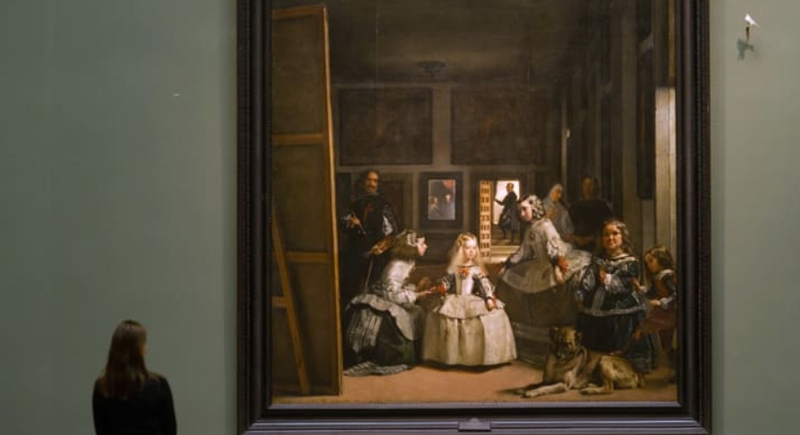
Credit: Facebook
Diego Velázquez’s “Las Meninas” is a complex interplay of gazes and reflections featuring the Spanish royal family and their entourage. Hidden in the mirror at the back of the room are the king and queen, watching either the scene or the painting itself being made. This clever placement questions the roles of observer and observed, making us rethink our perspective on reality and illusion.
Hieronymus Bosch’s Garden of Earthly Delights
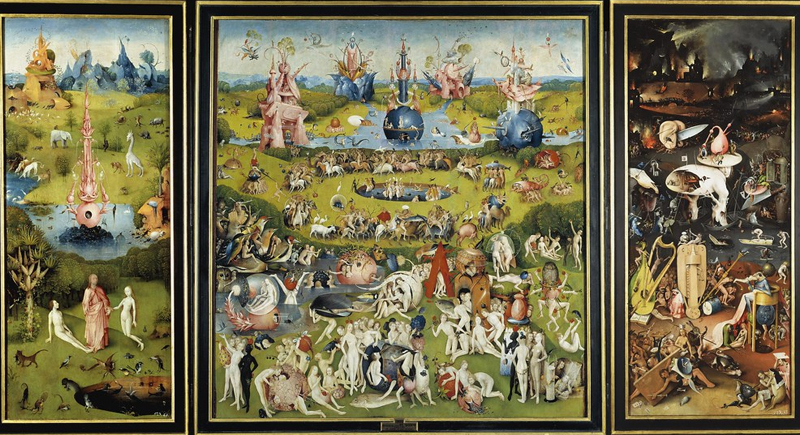
Credit: flickr
“Bosch’s Garden of Earthly Delights” is a triptych teeming with bizarre and fantastical imagery. Hidden among these are numerous alchemical symbols and musical notes written on the buttocks of one of the figures. These are believed to be codes, which, when played, create a melody, possibly indicating Bosch’s engagement with hidden sciences and the occult.
Rembrandt’s Shadowed Message
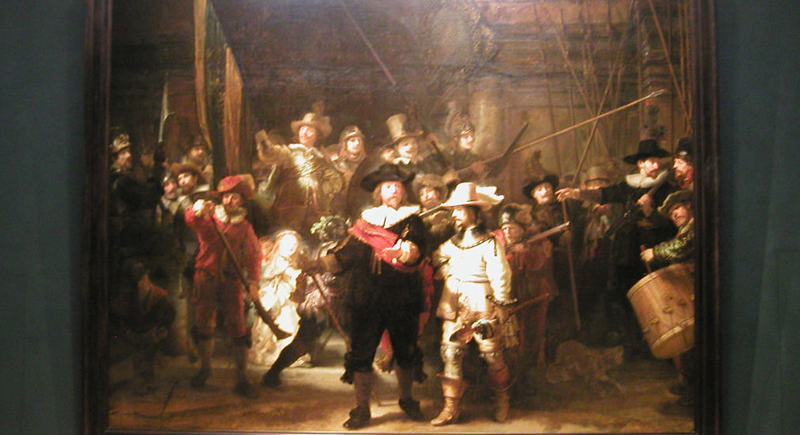
Credit: flickr
In Rembrandt’s “The Night Watch,” attention usually goes to the dramatic use of light and shadow. But hidden in those shadows are the names of the militia members, subtly incorporated into their surroundings. This personal touch not only gives the painting a sense of community but also immortality for the figures portrayed.
Vermeer’s Map of Conflict
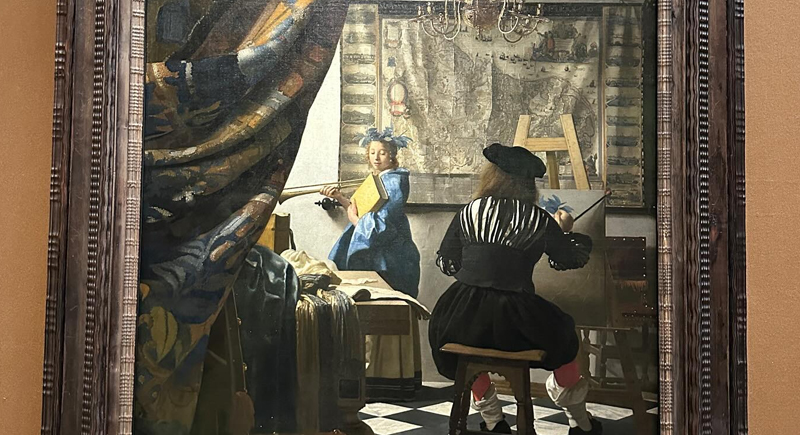
Credit: Instagram
In “The Art of Painting,” Vermeer doesn’t just show an artist at work; the large map hanging on the back wall represents the political divisions of the Netherlands during his time. This subtle but clear reference to contemporary conflicts provides a backdrop of tension behind the calm and concentration of the artist’s studio.